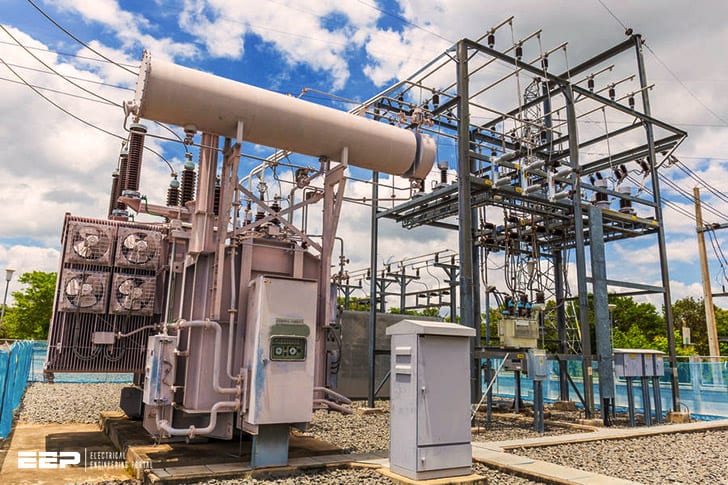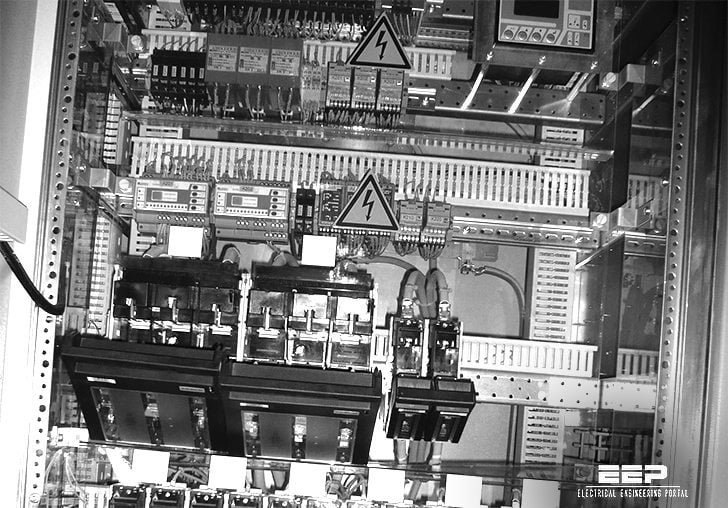A compact substation is a type of electrical substation that is designed to occupy a smaller footprint than a traditional substation. Compact substations may be used for a variety of applications, such as distribution, transmission, or industrial plants.
A compact substation is a type of electrical substation that is smaller in size and requires less space than a traditional substation. These substations are typically used in urban areas where space is limited, or in remote locations where it is difficult to transport large equipment.
Compact substations offer many benefits over traditional substations, including lower construction and maintenance costs, reduced environmental impact, and improved reliability.
In addition, compact substations are easier to expand or modify as needs change.
Despite these advantages, compact substations do have some disadvantages. They typically have less capacity than traditionalsubstations and may not be able to meet the demands of a growing population or economy.
Additionally, compact substations are more vulnerable to damage from severe weather events such as hurricanes and earthquakes.
Schneider Compact Substation
A Schneider Compact Substation is a prefabricated, factory-assembled unit that combines all of the necessary components of a traditional substation into a single, compact package. This type of substation is ideal for use in space-constrained applications such as urban areas, where land is at a premium.
The Schneider Compact Substation comes complete with everything needed for operation, including transformers, switchgear, busbars, and control and protection equipment.
All of the components are integrated into a single structure, which can be easily transported to the site and assembled on-site. The compact design of this substation saves valuable space and makes it easier to install than a traditional substation.
This type of substation offers many benefits over traditional substations, including improved safety, lower installation and maintenance costs, and reduced environmental impact.
In addition, the compact design of the Schneider Compact Substation makes it easier to expand or modify an existing substation without having to completely rebuild it from scratch.
11Kv Compact Substation
A 11Kv compact substation is a power distribution unit that is used to supply electricity to low voltage equipment. It is typically used in domestic and commercial settings where space is limited. The 11Kv compact substation contains a transformer that steps down the voltage from the mains supply, making it safe for use with low voltage equipment.
The advantage of using a compact substation over a standard substation is that it takes up less space and can be easily installed in locations where there is limited space available.
Compact Substation Pdf
A compact substation is a type of substation that is smaller in size and more efficient than a traditional substation. These substations are typically used in urban areas where space is limited. Compact substations can be located indoors or outdoors, and they can be mounted on poles, rooftops, or underground.
Compact substations offer many benefits over traditional substations, including:
1. Reduced footprint – Compact substations take up less space than traditional substations, which means they can be easily installed in urban areas with limited space.
2. Increased efficiency – Compact substations are more efficient than traditional substations, due to their smaller size and improved design.
This means that less energy is lost during transmission, resulting in lower electricity bills for consumers.
3. Enhanced safety – Compact substations are safer than traditionalsubstations because they use enclosed equipment that is less likely tocatch fire or cause an explosion. In addition, these enclosures protect Against environmental hazards such as wind, rain, and snow.
Compact Substation Transformer
A compact substation transformer is a power transformer that is used in electrical substations. It is typically used to step down the voltage from the primary transmission system to the secondary distribution system. The compact substation transformer can be either air-cooled or water-cooled.
The main advantage of using a compact substation transformer is that it takes up less space than a traditional power transformer. This is because the compact substation transformer uses smaller and more efficient cooling fans, and it has a smaller footprint.
Another advantage of using a compact substation transformer is that it can be more easily installed in difficult-to-reach places.
This type of transformer can also be used in mobile applications, such as in RVs and boats.
If you are considering using a compact substation transformer, there are few things to keep in mind. First, make sure that the primary voltage rating of the transformer is appropriate for your needs.
Second, select an appropriate cooling method based on your application (air-cooled or water-cooled). Finally, consider the size and weight of the unit when making your decision – a smaller unit may be easier to install but may not have enough capacity for your needs.
Compact Substation Specification
A substation is a critical part of the electric power delivery system. It is where voltage is transformed from high to low, or the reverse, by either increasing or decreasing the transformer size. The primary purpose of a substation is to switch generators, equipment, and circuits in order to change the voltage levels in an electrical system.
A secondary purpose may be to interrupt short circuits and faults so that service can be quickly restored.
A good specification for a compact substation should include the following:
-The nameplate capacity in MVA
-The primary voltage
-The secondary voltage
-The number of phases
-The frequency – 60 Hz or 50 Hz
-Transformer connections – delta or wye
-Cooling method – ONAN (oil natural air natural) or ONAF (oil natural air forced)
Abb Compact Substation Catalogue
An ABB compact substation is a complete, self-contained and ready-to-install unit. It comes with all the necessary equipment for installation in a single unit. This type of substation is usually used in locations where space is limited, such as on rooftops or in basements.
ABB offers a wide range of products and solutions for compact substations. The company has been a leading provider of electrical power equipment for more than 100 years. In addition to products for the traditional power grid, ABB also offers products and solutions for renewable energy applications, such as solar PV and wind farms.
The main advantages of using an ABB compact substation are:
1) Reduced installation time and costs: All equipment is supplied in a single unit, which reduces installation time and costs.
2) Increased reliability: The use of high quality components and state-of-the-art manufacturing process results in increased reliability.
3) Easy maintenance: All components are easily accessible, which makes maintenance easy and cost effective. 4) Flexibility: Compact substations can be easily expanded or modified to meet changing needs. 5) Environmentally friendly: These substations are built with the environment in mind, using environmentally friendly materials and processes.
Secondary Substation
There are many different types of electrical substations and the term “secondary substation” can have different meanings depending on the context. In general, a secondary substation is an electrical substation that is not the main or primary substation for a given area. The main or primary substation is typically the largest and most important substation in terms of voltage and power capacity.
It may also be referred to as the “primary switching station” or simply the “main switchyard.”
A secondary substation may be located near the primary substation to provide additional capacity or it may be located elsewhere in the distribution system to provide service to a specific load center. Secondary substations are usually smaller than primary substations and have lower voltage levels.
They may also be referred to as “service Substations” or ��branch Substations.”
The construction of a secondary substation follows many of the same principles as the construction of a primary substation.
The layout of equipment must take into account clearances, access for maintenance, ventilation, fire protection, and security.
Compact Secondary Substation Pdf
A compact secondary substation (CSS) is a prefabricated unit that houses all the equipment needed for a medium-voltage distribution system. The CSS is designed to be installed quickly and easily, with little or no site preparation required. It can be used as a standalone distribution system or as an expansion to an existing network.
The CSS contains everything necessary for safe and reliable operation of a medium-voltage distribution system, including: transformers, circuit breakers, protection relays, metering devices, and disconnect switches. All components are housed in a weatherproof enclosure that is designed to withstand the harshest conditions. The CSS can also be equipped with an emergency backup power system to keep the lights on in case of a power outage.
Installing a CSS is much easier and faster than traditional methods of constructing a secondary substation. This makes them ideal for use in remote or difficult-to-access locations. They are also well suited for applications where space is limited, such as in urban areas.

Credit: www.alibaba.com
What are the Three Types of Substations?
A substation is an electrical installation where equipment for generating, transmitting and distributing electric power is concentrated. The three types of substations are generation, transmission and distribution.
Generation substations are located at or near power plants.
Transmission substations connect the local grid to the high-voltage grid that runs between states. Distribution substations bring electricity from the transmission grid to end users.
What is the Size of Compact Substation?
Compact substations are usually small in size, but the actual size will depend on the specific application. For example, a compact substation for a residential area will be much smaller than one for an industrial area. The size of the compact substation will also be affected by the number of customers that it needs to serve.
What is the Function of Compact Sub?
In mathematics, more specifically in general topology, a compact subset of a topological space is a subset that is closed and bounded. That is, it is a set that contains all its limit points and has a finite cover by open sets. The notion of compactness can be extended to different types of spaces, such as metric spaces, uniform spaces, and vector spaces.
This extension, however, often requires additional axioms on the underlying space.
In the most common form of compactness for metric spaces (sometimes called Heine-Borel compactness), a subset K of a metric space X is said to be compact if every infinite sequence in K has an infinite subsequence which converges to some point in K; informally: “every sequence in K eventually ‘settles down'”. For subsets of Euclidean space this definition coincides with the usual one: A set S ⊂ Rn is compact if it is closed and bounded (that is, if it contains all its limit points and has only finitely many components).
What is the Purpose of a Mini Substation?
A mini substation is a smaller version of a traditional electrical substation. They are typically used to distribute power in residential or commercial areas. Mini substations are less expensive to build and maintain than larger substations, making them a more economical choice for many applications.
How to operations of a Compact substation (CSS)..Relay reset of Compact substation 11kv/415V..Part2
Conclusion
A compact substation is a type of substation that is smaller in size and requires less space than a traditional substation. Compact substations are typically used in urban areas where space is limited, or in remote locations where it is difficult to build a larger substation.
Compact substations have many advantages over traditional substations.
They are easier to build, require less land, and are less expensive to operate. In addition, compact substations can be more easily integrated into the surrounding environment.
There are several different types of compact substations, each with its own advantages and disadvantages.
The most common type of compact substation is the gas-insulated switchgear (GIS) type. GIS compact substations are very reliable and require little maintenance. However, they are more expensive than other types of compact substations.



